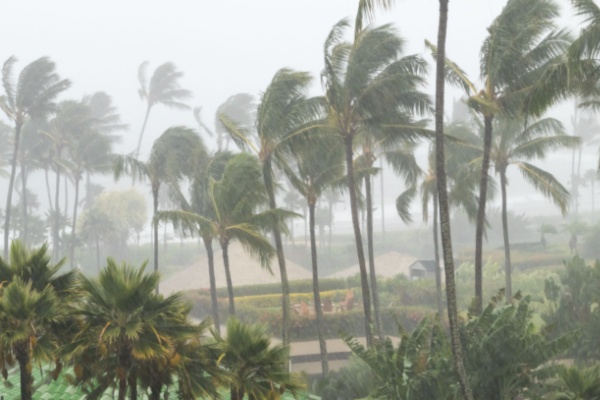 The 2025 Hurricane Season is off to a Strange Start
The 2025 Hurricane Season is off to a Strange Start
Hurricane Erick formed June 18 in the eastern Pacific Ocean, already becoming the fifth named storm of the eastern Pacific season to date. In a reverse of the usual hurricane season norms, this unusually high level of activity in the eastern Pacific contrasts sharply with the rather tepid start to hurricane season in the Atlantic.
As USA Today reports, by some counts, the Eastern Pacific has been on a historic run, recording five named storms before the third week of June for the first time on record, said WPLG-TV 10 meteorologist Michael Lowry via his email newsletter June 17.
The activity was due in part to a large-scale climate pattern known as the Madden-Julian Oscillation (MJO), which is an eastward-moving disturbance of clouds, rainfall, winds, and pressure. It traverses the planet in the tropics and returns to its initial starting point in 30 to 60 days, according to the National Oceanic and Atmospheric Administration (NOAA).
It, along with other obscure patterns such as Rossby and Kelvin waves, influence weather, including hurricane formation, around the globe.
What does the fast start in the Pacific mean for the Atlantic hurricane season?
Although some storms can cross over Central America from one ocean to the other, there isn’t really an overall connection in activity, AccuWeather hurricane expert Alex Da Silva told USA Today. Colorado State University meteorologist Phil Klotzbach agreed, noting in an email to USA Today that “there’s not a lot that we can say tying in the fast start to the eastern North Pacific to what the season may portend for the Atlantic.
“The relationship between Atlantic hurricane activity and eastern North Pacific hurricane activity just off of the west coast of Mexico (as we’ve seen this year), is fairly weak,” he said. Thus, the early activity in the Pacific isn’t likely a harbinger of storms to come in the Atlantic. DaSilva said the Madden-Julian Oscillation pulse made it to the eastern Pacific but fell apart before reaching the Atlantic.
What led to all the storms in the eastern Pacific so far this season?
The pulse of storminess that moves eastward around the globe’s tropical regions – the Madden-Julian Oscillation – “helped to kick off a flurry of storm activity in the eastern Pacific,” Lowry said.
Specifically, the MJO’s enhanced phase, which is characterized by increased rainfall and rising air, creates an environment more conducive for hurricane development, while the suppressed phase has the opposite effect.
Atlantic remains quiet ‒ for now
While the eastern Pacific is running about a month ahead of schedule with all of its activity, the Atlantic is on track for a typical to even slow start, Lowry said. “Models are muted on any development chances for the basin into at least the middle part of next week.”
The next chance of widespread storminess returning to the tropical Atlantic won’t be until around the first week of July.
Other planetary phenomena at play
A Kelvin wave, formally known as a convectively coupled Kelvin wave, is thought to have interacted with a Rossby wave over the Americas, contributing to limited tropical development in the Atlantic basin, but creating a favorable pattern that helped spawn the formation of both Dalila and Erick to the south of Mexico, according to the Climate Prediction Center.
Kelvin waves, which can extend up to 4,000 miles in length and be thousands of miles wide, move along the equator in the same direction as the Madden-Julian, only faster, said Quinton Lawton, a post-doctoral fellow at the National Center for Atmospheric Research in Colorado. Perturbations inside the waves can encourage thunderstorms and rainfall.
Scientists have only recently begun to understand more about how planetary phenomena work together to spawn or suppress tropical storms and hurricanes. “It turns out that these waves actually end up being really important for tropical cyclones,” Lawton said. Kelvin waves and Rossby waves originate from energy in the atmosphere and then move along the equator. As the Madden-Julian circumnavigates the globe, its interaction with these atmospheric waves can encourage storm formation.
—
Photo Credit: Ryan DeBerardinis / Shutterstock.com


